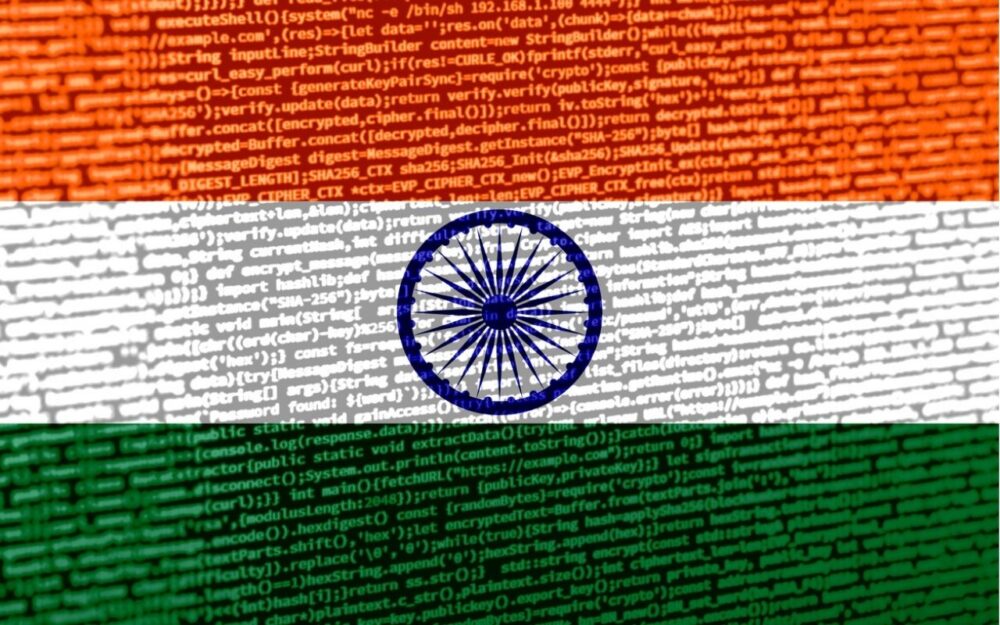A few months before the India AI Impact Summit in Delhi, scheduled for February 19–20, 2026, India is displaying an ambitious vision: turning AI into a lever for social inclusion, digital sovereignty, and international cooperation. Speaking at a conference during the AIM event in Marseille, Sanjeev Singla, India’s Ambassador to France, made clear that Delhi wants this moment to mark a turning point in global AI governance.
In a hurry? Here are the key notes to know:
- India wants to turn AI governance from theory into impact: The upcoming India AI Impact Summit (Feb 2026, Delhi) is meant not as a symbolic gathering, but as a summit producing concrete, real‑world applications of the principles agreed at the February 2025 Paris AI Summit.
- AI for social good: inclusion, public services and accessibility: India’s national strategy (through IndiaAI Mission) aims to use AI to address everyday social and economic challenges: improving healthcare (e.g. early disease detection), boosting agriculture and aquaculture, helping with climate adaptation, and easing burdens in justice systems — especially for rural or underserved populations.
- Shifting global AI power: putting the Global South at the centre: The summit intends to make the Global South a full partner — not merely a consumer — in shaping global AI governance. Through a public‑digital infrastructure model, shared data governance, emphasis on multilingual/lightweight AI adapted to local contexts, India wants to promote inclusive, responsible and sovereign AI accessible to all, including emerging economies.
From the Paris Summit to the Delhi Impact Summit
According to Ambassador Sanjeev Singla, the upcoming Indian summit aims to translate into action the principles established at the Paris Summit of February 2025.
“The Paris Summit was a major event. It enabled us to reach broad consensus on the foundational principles of responsible, human-centric AI. India contributed to these discussions.”
But for New Delhi, principles are no longer enough:
“We want to turn these principles into reality, protect the privacy of our citizens, the digital sovereignty of our companies, and have a concrete impact on the ground. That is why we call this meeting an ‘Impact Summit’.”
Singla insisted that the Delhi Summit must not be merely symbolic but truly impactful: the objective, he said, is to generate real on-the-ground outcomes by moving from theory to action, particularly in governance.
India’s Domestic Vision: AI as a Tool for Solving Social Challenges
All of this is encapsulated in the Vision AI India project. Launched after the Paris Summit, this program structures how AI should respond to the concrete needs of India. The country’s strategy places social impact at the heart of innovation — moving away from a vision focused on a few tech giants to building AI that is useful in everyday life.
“Our vision is simple: how do we use AI to solve real economic and social problems? How do we help small businesses, farmers, or improve healthcare?”
To achieve this, India is focusing on building compute capacity, creating high-quality datasets and large-scale skilling. The plan also involves supporting startups with funding, developing applications and foundation models as well as ensuring trust and safety mechanisms.
“That’s what we are already doing within the country.”
Several priority domains have already emerged:
Health
India faces a high incidence of tuberculosis. AI-powered early detection tools—especially in rural areas lacking specialists—are already showing promise.
Agriculture and Aquaculture
AI can help farmers optimize yields, manage aquaculture, and better anticipate climate risks.
Climate Adaptation
“India is a tropical country and therefore faces extreme climate events. AI can help forecast heat waves or map flood-risk zones.”
Justice
AI-driven transcription tools can reduce the enormous backlog in courts—a challenge shared by many countries, including France.
But the Ambassador stresses that innovation must fit Indian realities:
“Everything must be scalable for 1.4 billion people and accessible at very low cost. We are a linguistic and vocal society. People are more comfortable with voice than text. AI must be rooted in these realities.”
For this reason, India favors lightweight, mobile, multilingual AI models.
Anne Bouverot, Special Envoy on AI for President Macron, highlighted the importance of this approach:
“The models the Ambassador mentions are impressive: very small models running on mobile devices, close to the users. This is something from which we can draw inspiration.”
Read also
Building a Public Digital Infrastructure for AI
A cornerstone of India’s strategy is the creation of a public digital infrastructure (DPI) for AI, inspired by the country’s successful digital public platforms (Aadhaar, UPI, etc.).
This new infrastructure will be open, scalable, and designed for both public and private sectors, operating within a framework of trust and sovereignty.
This model breaks sharply with Western architectures dominated by private giants. India rejects the “national champion” logic and instead promotes shared, responsible, non-profit infrastructures.
“We are bringing the world a new architecture for AI—an open, scalable public digital infrastructure. In India we believe that any technology emerging from AI must serve social and economic needs. India, with its 1.4 billion people, is an example for the world, especially the Global South where public infrastructure is essential.”
Practically, the infrastructure will provide secure data-sharing, protect privacy, and preserve sovereignty. It will operate as a data utility: a neutral actor that cleans, organizes, certifies datasets, ensures fairness, and applies model watermarking.
Singla emphasized this key distinction:
“Between those who provide the data and those who consume it, we need a public-private, non-profit utility that cleans the data, organizes it, guarantees confidentiality, and certifies that the models are fair.”
India is already testing this approach abroad. A pilot project is underway in France, in the health sector, exploring cross-border data flows that meet both countries’ regulatory standards.
Anne Bouverot highlighted the political alignment:
“We share the idea that AI must serve people, not only enrich a handful of billionaires. We also share a vision of digital sovereignty: a third way where countries like India and France cooperate.”
As a matter of fact, the 2026 summit will coincide with the France–India Year of Innovation, to be launched by President Emmanuel Macron in Delhi.
India also aims to train 800,000 AI-related graduates, not only engineers but also professionals able to integrate AI into socially useful applications.
The Global South at the Center of the Agenda
One of the defining features of the upcoming summit is India’s decision to place the Global South at the heart of global AI governance.
“It is the first time a global summit on AI is hosted in the Global South. This is very important for us. We do not want the Global South to be only a consumer of AI. We want it to be a partner in shaping the global AI agenda.”
India wants the Delhi Summit to anchor a global agenda based on economic empowerment, Cultural and linguistic sovereignty and Data as a shared but protected asset.
To implement this, the summit will be structured around three pillars — People, Planet, Progress — and thematic working groups (“chakras” in Indian) covering: human capital, social inclusion, safe and trusted AI, resilience and innovation, science, democratization of AI resources, and AI for growth and social good.
Each group will be co-organized by countries from the Global South (Philippines, Rwanda, Nigeria, Kenya, Egypt…) or countries like France, which will coordinate the resilience group. This reflects India’s attempt to build a concrete, inclusive multilateralism.
Challenges and Criticisms: An Ambitious Vision with Real Obstacles
India’s vision is ambitious but not without challenges, as some observers point out.
Despite its strong workforce, India lags in fundamental R&D, as reported by the French newspaper Le Monde.
The country remains dependent on foreign architectures and large models. Few major purely Indian models dominate the market — though this is consistent with India’s stance of not pursuing “national champions.”
Regulatory gaps persist. Indian researchers recently argued for a framework dedicated to AI incident reporting, especially in critical sectors like telecommunications. Current laws on telecoms, cybersecurity, and data protection do not cover AI-specific failures, creating a vacuum.
AI For All
Still, by organizing the 2026 Delhi AI Summit, India aims to propose a new model of AI governance centered on social impact, the inclusion of the Global South as an active player, digital sovereignty, and global cooperation.
If this vision materializes, the 2026 Summit could become a true catalyst for “AI for all” and a more inclusive, sustainable international roadmap.
Read also






![Image [Buying Guide] How to Choose the Right AMR?](/wp-content/uploads/sites/3/AMR-320x213.jpg)



